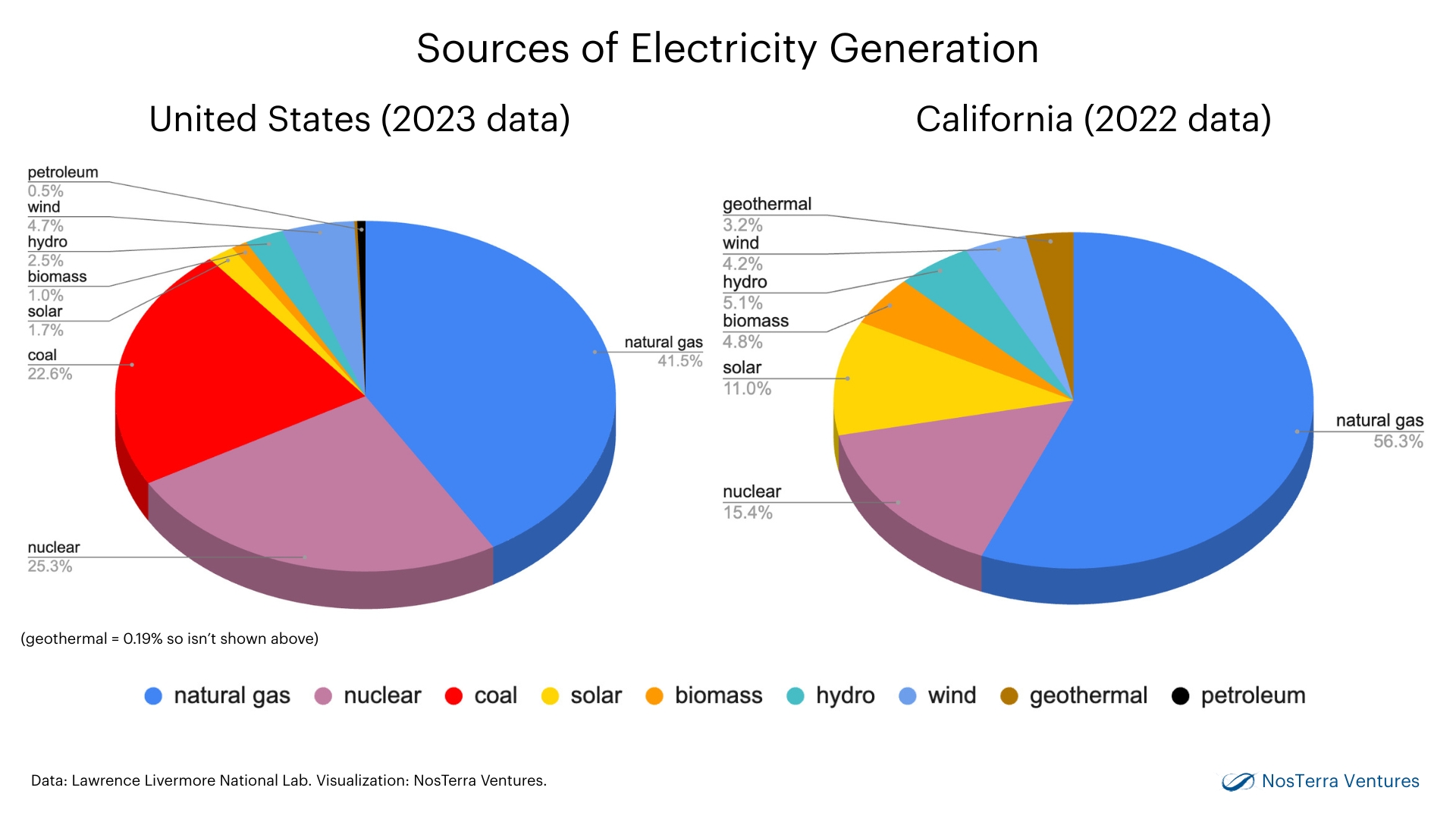Improving the Cost of Electricity in California by Improving the Sources

Note: This article was originally published here
Previously I analyzed a sankey diagram of energy flow in the U.S., and now I’d like to compare that national snapshot to the state of California’s energy needs, with a specific focus on the electric grid markets (links to my previous posts are in the comments below).
The combustion of natural gas provides the largest source of electricity to the grid, both nationally and in California. Emission-free energy sources, like solar, wind and nuclear, provide 44% of California’s electricity, compared to the national average of 36%.
One thing that distinguishes the Golden State is the use of coal, which accounts for more than a fifth (23%) of electricity generation nationally, but is non-existent in the California market. Even nationally, coal’s market share has dwindled, down from 50% a few decades ago. This loss of market share is mainly due to natural gas being cheaper than coal and to a relatively low capital investment required to convert a coal-fired power plant into a natural gas plant.
There is effectively zero presence of petroleum in the electric grid marketplace at the state and national level. This, too, is tied to the economics of petroleum. Until the recent development of advanced high energy density batteries like Li-ion, the market for vehicle fuel was almost exclusively served by petroleum, a resource whose pricing and supply are controlled by cartels.
Now that advanced battery technology is readily available, electricity can compete in the transportation marketplace. Fueling a mile in an electric vehicle (EV) is more than 5x cheaper than in a petroleum-fueled vehicle, because energy sources must compete like commodities on the electric grid. Additionally, EVs have a higher energy conversion efficiency.
If we embrace the conversion of the transportation market from petroleum to electricity, it will both save the U.S. economy $6 trillion over the next 20 years and reduce our carbon footprint substantially.
There will be a lot to watch for in the coming years. Currently, the cheapest energy sources for the electricity grid are natural gas, solar, wind and geothermal. The latter three sources, which are all emissions-free, are growing rapidly, but our energy markets are so large that it will take a long time to see them take over dominant market shares.
Another important dynamic will be driven by the growth of zero-emission technologies: As the size and presence of renewable energy sources expand, their associated cost structures will continue to drop, making them an increasingly attractive option economically.
And then there is the acceleration of AI data centers, which will drive additional investment into the grid and electricity infrastructure needed to meet our future computing needs, while also adding economic incentives to advance low cost energy technologies.
All of this transformation is based on economics, and economics will be the driver for an expanding market for zero-emissions energy in the coming decade.
— Dave Welch